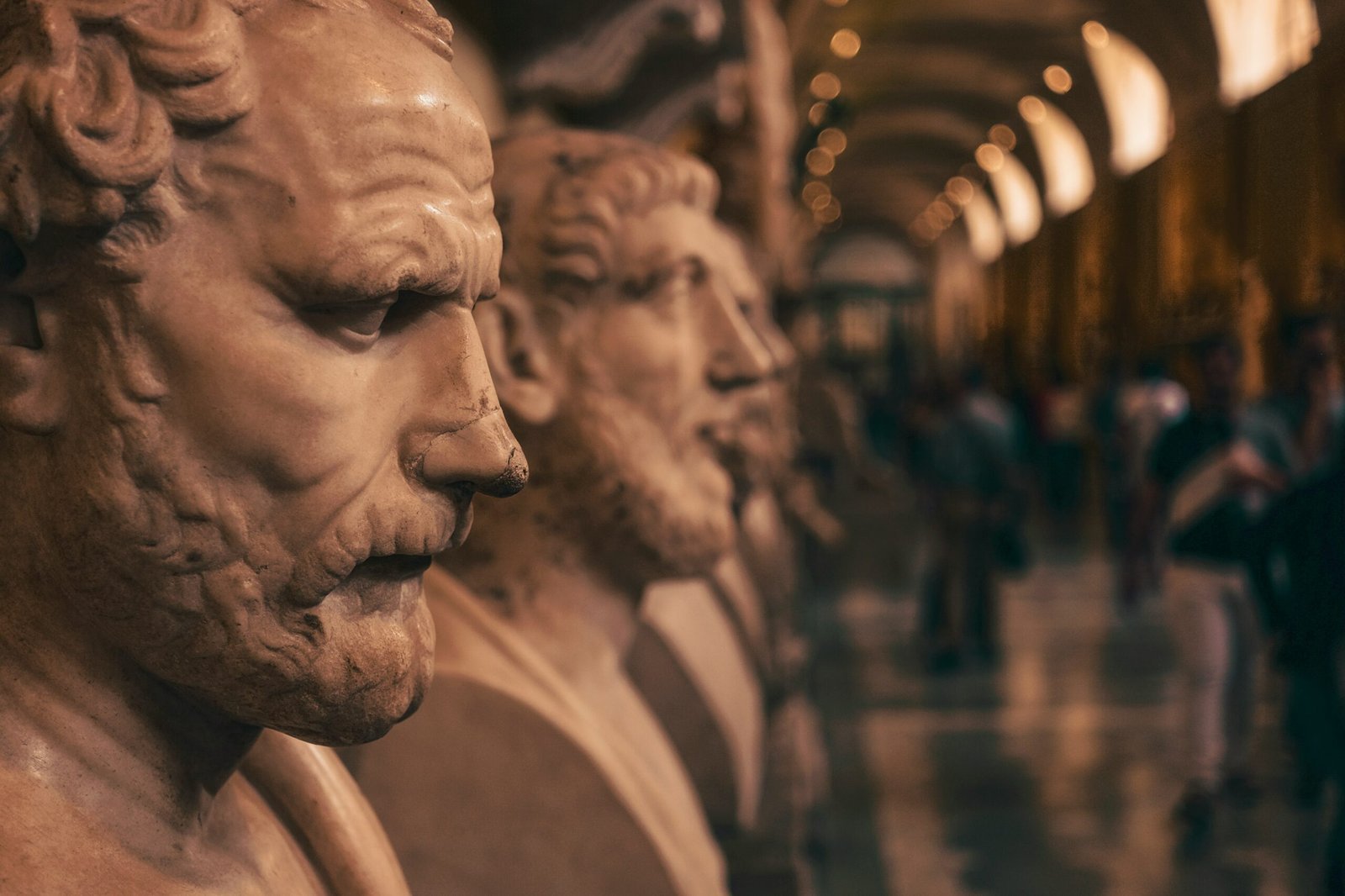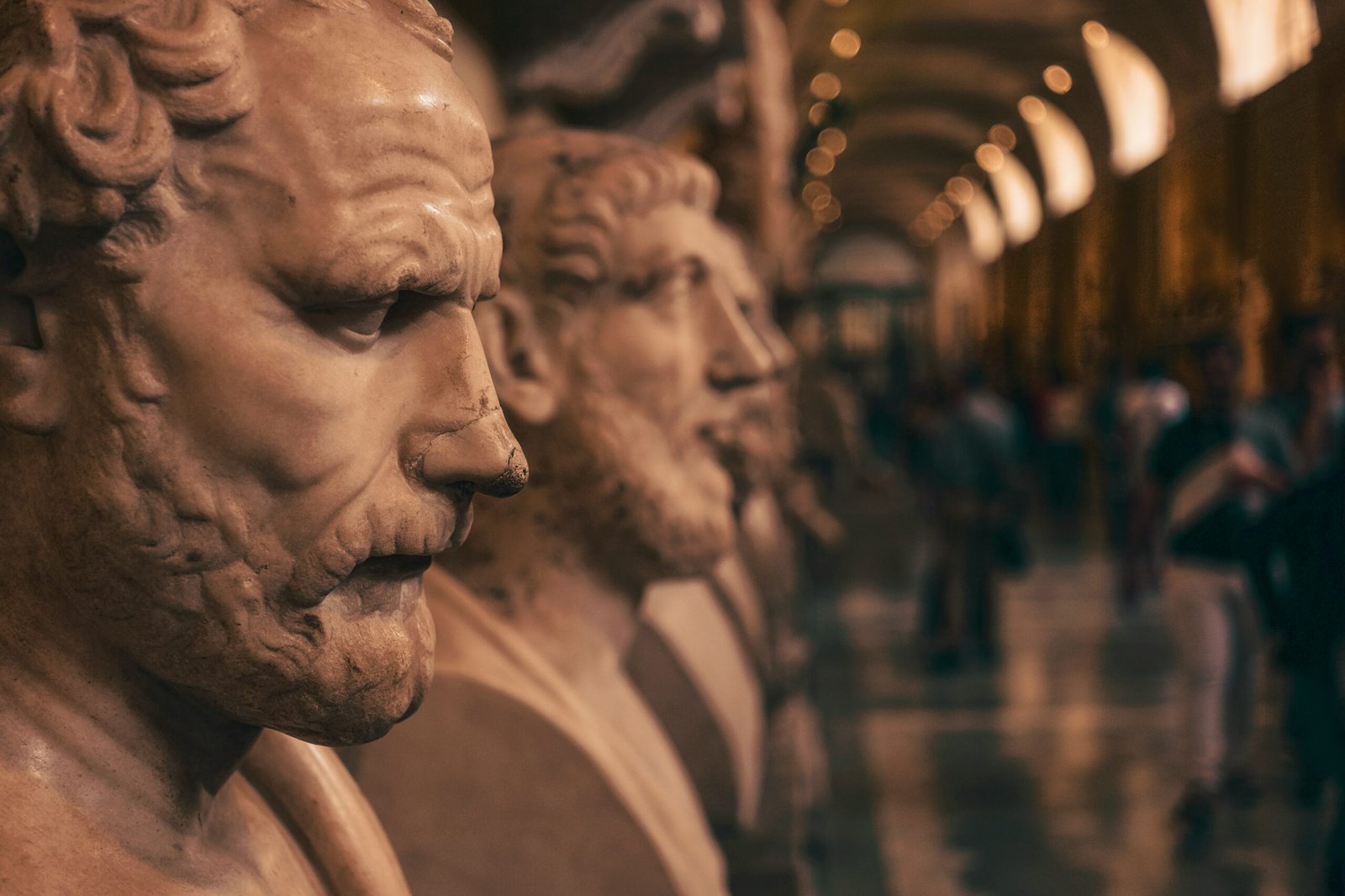
Introduction to the Issue
The African American History Museum stands as a pivotal institution dedicated to preserving and celebrating the rich tapestry of African American history and culture. Opened in 2016 as part of the Smithsonian Institution, the museum serves not only as a repository of artifacts but also as a crucial educational platform that informs the public about the historical experiences and contributions of African Americans. This institution plays a vital role in recognizing the complexities and challenges faced by African American communities throughout history, allowing visitors to engage with the narratives that have shaped the United States.
However, during the Trump administration, a series of actions raised serious concerns regarding the preservation and celebration of African American heritage. The administration’s decision to remove specific artifacts from the museum has sparked widespread debate and criticism, highlighting a growing national dialogue about historical integrity and representation. Many view these actions as part of a broader trend associated with efforts to minimize the recognition of marginalized voices and experiences within American history.
The controversies surrounding the removal of artifacts reflect deeper societal issues related to race, memory, and the politics of representation. Detractors argue that such decisions undermine the mission of the museum and reflect an unwillingness to confront uncomfortable truths about American history. This situation compels stakeholders—from scholars to activists—to reevaluate the importance of cultural artifacts as essential components of public memory and historical education. As discussions around these removals continue to unfold, it remains crucial to consider the implications of such actions on both the institution and the wider understanding of African American history.
Historical Significance of the African American History Museum
The establishment of the African American History Museum, formally known as the National Museum of African American History and Culture (NMAAHC), was a pivotal moment in the recognition and appreciation of African American history within the broader narrative of American identity. Inaugurated in September 2016, the museum serves not only as a repository of artifacts and stories but also as an educational platform aimed at deepening the public’s understanding of the African American experience. The museum’s mission is to inspire respect and a deeper understanding of the significant impact of African Americans on American culture and history.
One of the core components of the museum is its rich collection of artifacts that provide context to the African American struggle, resilience, and contributions. Notable items include a segregated Jim Crow train car, Emmett Till’s casket, and a replica of the Tuskegee Airmen’s training aircraft. Each artifact encapsulates vital narratives that encourage visitors to confront the complexities of race, identity, and justice in America. The exhibits are judiciously curated to highlight both the systemic injustices faced by African Americans throughout history and their triumphs. This dual focus enriches the visitor experience, facilitating a multifaceted understanding of the historical significance of African Americans.
The museum not only focuses on the past but actively engages with contemporary issues that resonate within the African American community today. Educational programs, workshops, and community events aim to foster dialogue, foster awareness, and encourage reflection on the persistent impact of history on modern society. Thus, the African American History Museum stands as a crucial institution in the ongoing effort to highlight stories often overlooked, making it an essential component of America’s cultural landscape. Through its extensive efforts, the museum plays a critical role in shaping a comprehensive understanding of the African American contribution to American history.
The Trump Administration’s Actions Explained
The removal of artifacts from the African American History Museum during the Trump administration has raised significant concerns regarding historical preservation and representation. Throughout this period, the Trump regime implemented several actions that sparked controversy and criticism from historians, curators, and community members dedicated to preserving African American heritage.
In April 2017, officials within the Department of the Interior announced plans to relocate various artifacts, citing the need for “updating” the displays as part of a broader initiative aimed at improving national historical narratives. However, many critics argue that these statements served as a veneer for a more troubling intent—to marginalize African American history and culture within the national framework. The artifacts in question, ranging from slave narratives to items of significant cultural importance, were deemed by some administration members as less essential than other historical exhibits.
Additionally, the Trump administration’s decisions were perceived as part of a wider pattern of actions that questioned the significance of African American narratives within the overarching American story. Statements from officials suggested a push towards a “better representation” of American history that aligned with their political ideologies, often at the expense of more complex and inclusive historical accounts. These motivations have been criticized as exclusionary and detrimental to the collective understanding of the nation’s past.
The implications of these removals reached beyond mere artifact relocation; they raised alarm about the broader effects on educational resources, public perception, and the preservation of African American history. In response to these actions, many advocacy groups emerged, emphasizing the importance of maintaining a comprehensive and accurate representation of African American experiences in the history curriculum.
Now, as discussions continue regarding the future of these artifacts, the debate surrounding the Trump administration’s actions reveals a much larger struggle over historical representation in America.
Public and Scholarly Responses
The removal of artifacts from the African American History Museum has prompted a significant response from both the public and scholarly communities. In recent months, various groups have taken to the streets, organizing protests and rallies aimed at voicing their discontent over the government’s decision to dismantle aspects of history that symbolize the struggles and achievements of African Americans. Activists argue that such actions represent not just a physical removal of historical artifacts, but also a broader attempt to erase the narrative of African American experiences from the collective memory.
Social media has become a vital platform for raising awareness and mobilizing support against this controversial decision. Campaigns utilizing hashtags, such as #PreserveOurHistory and #ArtifactsMatter, have garnered widespread attention, facilitating discussions on the importance of preserving African American history and heritage. These online movements have allowed individuals from diverse backgrounds to share personal stories, express solidarity, and discuss the implications of losing these artifacts, further cultivating a sense of community in the fight for historical preservation.
Academic institutions have also joined the chorus of disapproval. Historians and scholars specializing in African American studies and cultural heritage have released statements condemning the removal of artifacts, emphasizing that such actions undermine years of research and commit a disservice to future generations. Many universities have organized forums and lectures to explore the significance of these artifacts within the broader context of American history. In this regard, scholars posit that the removal is not merely a political issue but an ethical one that raises questions about who controls historical narratives and the impact of those decisions on society.
Overall, the response from the public and academia underscores a commitment to preserving African American history, affirming that artifacts serve as vital testimonies to the culture, struggles, and achievements of a community that continues to shape national identity.
The Impact on African American Communities
The removal of artifacts from the African American History Museum presents significant implications for African American communities, deeply affecting their collective memory, identity, and ongoing quest for equality. Artifacts serve as vital connections to the past, embodying the struggles, triumphs, and cultural heritage of African Americans. When these items are stripped away, it disrupts the narrative of history that is crucial for identity formation within these communities.
First and foremost, the removal of such artifacts undermines the essential work of preserving African American history. Institutions like the African American History Museum play an important role in educating not only the general public but also African Americans themselves about their rich heritage. The loss of these objects can create a disconnect between individuals and their history, leading to a diminished understanding of their cultural identity. This can contribute to feelings of alienation as communities grapple with a history that is often marginalized or overlooked in mainstream narratives.
Moreover, the impact of these removals resonates with larger societal issues, such as the struggle for equality and recognition. The preservation of artifacts and their stories is not merely an academic interest; it is a form of resistance against systemic inequalities. The erasure of physical representations of African American history echoes broader attempts to suppress these narratives in American society, leading to a sense of disenfranchisement among community members. As communities fight for equal treatment and acknowledgment, the absence of these artifacts serves as a painful reminder of the ongoing fight for justice and representation.
In conclusion, the removal of artifacts from the African American History Museum has far-reaching effects on African American communities. It not only disrupts collective memory but also hampers the ongoing struggle for equality and recognition. Preserving these artifacts is crucial for fostering a sense of identity that is respected and celebrated within the larger context of American history.
Comparative Analysis with Other Historical Erasures
The removal of artifacts from the African American History Museum during the Trump administration can be contextualized within a broader spectrum of historical erasures that have occurred globally and within the United States. Throughout history, instances of deliberate attempts to suppress or alter cultural narratives mirror the actions taken during this controversial period. For example, the removal of Native American artifacts and the repatriation debates highlight an ongoing struggle to preserve cultural identity against governmental and colonialist forces. Such decisions often undercut the cultural heritage that the artifacts signify and displace historical narrative ownership.
Moreover, actions reflecting this erasure are not solely confined to the United States. One pertinent example is the destruction of the Buddhas of Bamiyan in Afghanistan by the Taliban in 2001. This event illustrates a direct assault on culturally significant artifacts that embody centuries of history. Similarly, the systematic destruction of cultural sites in Syria, as seen during the civil conflict, points to a disturbing trend of erasing history that poses a grave threat to collective memory and identity. Through these instances, it becomes apparent that the act of removing or destroying artifacts is rooted in attempts to reshape narratives in favor of prevailing ideologies, often leading to significant repercussions for cultural heritage.
Legal and Ethical Considerations
The removal of artifacts from the African American History Museum during the Trump administration has sparked significant debate over both legal and ethical considerations. At the core of this discussion are various laws designed to protect cultural heritage, including the Native American Graves Protection and Repatriation Act (NAGPRA) and the National Historic Preservation Act, which outline a framework for the treatment of culturally significant materials. These laws underscore the importance of preserving artifacts that represent the history and identity of communities, particularly marginalized groups whose legacies are often overlooked. Violations of these laws not only jeopardize the security of such artifacts but also challenge legal norms established to respect cultural property.
Beyond statutory regulations, ethical responsibilities also play a pivotal role in the conversation surrounding the removal of artifacts. Museums have an obligation to the public, as well as to the communities from which artifacts originate. This includes fostering an inclusive approach to historical narratives, ensuring representation, and engaging in active dialogue with stakeholders. The ethical implications of artifact removal extend to considerations of provenance, which examines the origin and ownership history of items. This aspect is crucial, as many artifacts linked to African American history were removed from their communities without consent, raising pressing ethical questions regarding ownership and restitution.
Moreover, the impact of removing such artifacts from the museum setting cannot be understated. Museums serve as custodians of collective memory, and the absence of these artifacts can distort historical narratives and diminish cultural education. Thus, it becomes imperative to weigh the legal ramifications against the ethical duty to uphold the integrity of cultural heritage. The dialogue surrounding these legal and ethical dimensions ultimately calls for a more conscientious approach to the stewardship of historically significant artifacts, contributing to a broader acknowledgment of cultural responsibility. Through careful deliberation, stakeholders can begin to address the repercussions of past actions in order to prevent a recurrence in the future.
Future of the African American History Museum
The recent removal of artifacts from the African American History Museum has raised significant concerns regarding its future trajectory. The museum, established as a vital space for preserving and showcasing the rich history and cultural contributions of African Americans, may face challenges in its upcoming exhibitions. The absence of key artifacts could lead to a diminished narrative, making it imperative for museum curators to creatively adapt. Future exhibitions might need to rely heavily on loans from other institutions or on digital displays to keep the narrative robust and engaging.
Funding is another critical aspect for the museum’s sustainability in the post-removal landscape. The museum traditionally depends on federal and private contributions to maintain operations and develop new exhibits. Without a compelling collection, the museum may struggle to attract financial support. Fundraising efforts will likely need to be redefined, focusing not only on supporting the existing collection but also on expanding community partnerships and educational programs that emphasize the importance of African American history even in the absence of physical artifacts.
Community engagement will also undergo a transformative phase. The museum serves as a community hub, and its leadership will need to re-envision outreach programs to ensure that visitors remain connected to African American heritage. Engaging local communities through collaborations, educational workshops, and events will be crucial to maintain interest and support. Furthermore, strategic advocacy efforts may be essential in rallying public support to restore the museum’s integrity and mission.
In summary, while the future of the African American History Museum in light of recent events poses undeniable challenges, proactive measures focusing on innovative exhibits, diversified funding strategies, and strengthened community ties may pave the way for a resilient and impactful presence. Maintaining a commitment to its mission will be vital as it navigates this turbulent chapter.
Conclusion: The Importance of Historical Preservation
The removal of artifacts from the African American History Museum during the Trump administration raises significant concerns regarding the preservation of cultural heritage. Historical artifacts serve as essential tools for understanding and validating the complex narratives that shape African American history. They connect us to a past filled with struggle, resilience, and accomplishment, enriching our collective memory and identity. The removal of these artifacts not only risks diminishing the rich tapestry of African American experiences but also poses a broader threat to the historiography of the United States.
Each artifact carries inherent value, offering insights into the lives, struggles, and contributions of African Americans throughout history. By engaging with these tangible representations of the past, individuals and communities can foster a deeper appreciation for the cultural and historical contexts that inform contemporary American society. In this light, the preservation of such artifacts must be regarded as a moral imperative, essential for ensuring future generations understand the importance of diversity, equity, and inclusion in the American narrative.
As advocates for historical preservation, it is crucial to support initiatives that safeguard these significant cultural treasures. Local museums, educational institutions, and community organizations play a critical role in this endeavor, actively working to combat historical erasure. By promoting awareness and appreciation for African American history and its artifacts, we can challenge narratives that seek to diminish their importance. In order to achieve this, public engagement and advocacy must be prioritized, advocating for the protection and restoration of artifacts that tell the stories of marginalized voices.
In summary, preserving historical artifacts is vital not only for honoring the past but also for shaping the future of American society. It is the shared responsibility of individuals and communities to ensure that the lessons and legacies of history remain accessible and relevant.



